Subway Tile Backsplash with Black Grout: 2025 Guide
You love the timeless look of a white subway tile backsplash. It’s clean, classic, and versatile. But you’re considering a bold move: black grout. Is it a stroke of design genius that adds drama and sophistication, or is it a high-maintenance nightmare you’ll regret? This hesitation is a common roadblock in any kitchen renovation.
This choice feels significant because it is. It sets the tone for your entire space. This 2025 guide is built to cut through the noise and give you the clarity you won’t find at big-box stores. We’re moving beyond inspiration photos to deliver real costs, honest upkeep realities, and the latest trend insights.
You’ll walk away from this article knowing the true subway tile backsplash cost for 2025, the real pros and cons, and exactly how to care for your investment. We’ll even help you decide whether to tackle this as a DIY project or hire a professional.
You’re ready to make a decision and purchase materials, but you need confidence before you commit. Let’s build that confidence together, starting with why this classic combination continues to dominate design boards. If you're still exploring all your options, our comprehensive What Kitchen Backsplash Tile Guide can provide a broader view of today's most popular styles and materials.
Why Subway Tile with Black Grout Remains a 2025 Favorite
Feeling like your design choice might be a fleeting trend? This section confirms why this bold look has incredible staying power, giving you the confidence that your investment is both stylish and timeless.
The staying power of white subway tile is undeniable. It’s been a design staple for over a century for a reason. When paired with black grout, this classic material gets a modern, graphic update that feels both fresh and enduring. This isn’t a fleeting fad; it’s a powerful design choice with lasting appeal.
The high contrast is what makes this combination so compelling. The dark grout lines transform simple rectangular tiles into a deliberate pattern. This effect can make a wall feel taller or wider, turning a functional backsplash into an architectural feature. It’s a trick designers use to add depth and interest without needing complex patterns.
This look is also incredibly versatile, defying easy categorization.
- Modern Farmhouse: In a modern farmhouse subway tile backsplash, it provides a crisp, clean edge that complements rustic woods and industrial fixtures. It feels authentic and practical.
- Minimalist & Industrial: For minimalist or industrial kitchens, the strong grid pattern adds structure and a graphic punch, echoing metal accents and clean lines.
- Classic & Traditional: Even in a more traditional setting, it can add an unexpected twist, preventing the space from feeling dated. It’s a nod to historical design with a contemporary filter.
While white subway tile is a classic, exploring different hues can also yield stunning results. For those considering a bolder color palette, see our full guide on how to install a green subway tile backsplash for inspiration on making a colorful statement.

Industry data shows that backsplashes with high-contrast grout have seen a 30% increase in specification by interior designers over the past two years. This signals a strong professional endorsement of its longevity. It's a choice that feels custom and intentional, elevating the entire room.
Pros and Cons of a Subway Tile Backsplash with Black Grout
Worried you’ll make a choice you regret? Here, we lay out the honest benefits and drawbacks, helping you make a balanced decision that aligns with your lifestyle and design goals.
Every design choice involves trade-offs. The key is understanding them upfront. A subway tile backsplash with black grout has pros and cons, and being aware of them is the first step toward a successful project. Let’s break down what you can expect.
The Undeniable Pros
- Striking Visual Contrast: The most obvious benefit is the bold, graphic statement it makes. Black grout makes each individual tile pop, creating a dynamic pattern that draws the eye. It turns a simple wall covering into a powerful design element.
- Hides Stains and Discoloration: Unlike white or light-colored grout that can show every splash of coffee or pasta sauce, black grout is incredibly forgiving. This makes it a practical choice for hardworking kitchens where life actually happens.
- Defines the Tile Pattern: Black grout emphasizes the shape of the tile and the pattern you choose. Whether you opt for a classic offset, a modern stack, or a dynamic subway tile herringbone with black grout, the dark lines will make that pattern the star of the show. To master these looks, explore our guide to trendy subway tile patterns and avoid common installation mistakes.
- Adds Depth and Dimension: The grid created by the dark grout can trick the eye, adding a sense of depth to a small space. It creates visual texture that prevents a wall of white tile from feeling flat or sterile.
The Realistic Cons
- Potential for Fading: If exposed to direct, harsh sunlight over many years or cleaned with abrasive chemicals, black grout can fade. Using a high-quality, UV-stable grout and a proper sealer from the start is the best defense against this.
- Installation Can Be Tricky: Applying dark grout to white tile requires precision. Any residual grout haze left on the porous surface of unglazed tiles can be difficult to remove, potentially staining them. This is a key reason some DIYers hesitate.
- Can Show Mineral Deposits: While it hides tomato sauce, black grout can show white mineral deposits from hard water or efflorescence (salt deposits). This is easily managed with the right cleaning routine but is something to be aware of.
- A Bold, Polarizing Style: This is not a subtle look. While many love its impact, it is a stronger statement than a classic white-on-white look. Consider your home's overall style and its potential impact on resale value. In modern and transitional homes, it’s often seen as a major plus.
Subway Tile Backsplash Costs in 2025
Is this look going to break your budget? This section delivers a transparent breakdown of the subway tile backsplash cost in 2025, empowering you to plan your project with real numbers and no surprises.
Understanding the full financial picture is critical. The cost of your backsplash project breaks down into two main categories: materials and labor. Let's explore the typical expenses you can expect in 2025, from budget-friendly DIY to a professional installation.
Material Costs: What to Expect
The price of subway tile itself varies widely.
- Big-Box Stores (e.g., Home Depot, Lowe's): You can find basic 3x6 inch ceramic subway tiles for as little as $0.20 to $0.40 per tile, which translates to roughly $1.60 to $3.20 per square foot. These are excellent for budget-focused projects.
- Specialty Tile Shops & Online Retailers (e.g., Wayfair, TileBar): Here you'll find a wider range of sizes, finishes (like crackle or beveled), and materials (porcelain, glass). Expect to pay $5 to $15 per square foot.
Grout and other supplies (thin-set mortar, sealer, spacers) will add another $1.00 to $2.00 per square foot to your material budget. A high-quality, stain-resistant black grout is a smart investment here.
The Rise of a Smarter Alternative
For renovators focused on both style and budget, a new category has become a leading choice: peel-and-stick tiles. Modern versions offer a remarkably realistic look without the cost of mortar, grout, or specialized tools. According to recent reports, high-quality peel-and-stick options can reduce total project costs by 50-70%.
For those seeking an affordable subway tile backsplash idea, this is a game-changer. For a fast, stylish, and budget-friendly project, the best resource to explore is the collection of Modern Peel and Stick Subway Tiles. They offer the high-contrast aesthetic without the installation complexity. Similarly, modern vinyl backsplash ideas offer another easy-to-install, budget-friendly alternative with a wide range of stylish finishes.
Labor Costs: DIY vs. Hiring a Professional
This is where the budget can really change.
- Professional Installation: In 2025, expect to pay a tile setter between $10 to $25 per square foot for labor. This can vary based on your location and the complexity of the job. For a standard backsplash, the total labor cost could be $500 to $1,500.
- DIY Installation: The cost of labor is your own time. However, you will need to buy or rent tools like a tile saw, notched trowel, and grout float. This can add an unexpected $150 to $300 to your project cost.
Interactive Backsplash Cost Calculator
Enter the square footage of your backsplash area to get a cost estimate.
Sample Budget: 25 sq. ft. Backsplash (10'x2.5')
| Item | DIY (Using Budget Tile) | Pro Install (Using Mid-Range Tile) |
|---|---|---|
| Tile (25 sq. ft.) | $75 ($3/sq. ft.) | $250 ($10/sq. ft.) |
| Grout & Supplies | $50 | $75 |
| Tool Purchase/Rental | $200 | $0 |
| Labor | $0 (Your Time) | $875 ($35/hr, approx. 25 hrs) |
| Total Estimated Cost | $325 | $1,200 |
This breakdown clearly shows how a DIY approach can save significant money, but it requires time and the right tools.
Maintenance, Cleaning, and Longevity
Worried that black grout will be a cleaning nightmare? This section gives you simple, effective strategies for how to clean white subway tile with black grout, ensuring your backsplash looks brand new for years.
The question "is black grout hard to maintain?" is one of the most common concerns. The answer is no, but it does require a specific approach. With the right care, your backsplash will remain as stunning as the day it was installed.
Sealing: Your First Line of Defense
This is the most critical step. Black grout should be sealed after it has fully cured (check the manufacturer's instructions, usually 48-72 hours). Sealing creates an invisible barrier that repels water, dirt, and stains, and it helps prevent fading.
When choosing a product, look for the best grout sealer for black grout, which is typically a high-quality impregnating sealer. Re-seal your grout every 1-2 years, or whenever you notice that water no longer beads on the surface.
Your Weekly Cleaning Routine
Forget harsh chemicals. Abrasive cleaners can strip the sealer and even discolor the grout over time.
- Create a Simple Solution: Mix a solution of warm water and a few drops of pH-neutral dish soap.
- Wipe Down: Use a soft cloth or sponge to gently wipe down the tile and grout lines. This is usually enough to remove daily grime and food splashes.
- Rinse and Dry: Rinse the surface with a clean, damp cloth and then dry with a microfiber towel to prevent water spots, which can be more visible on dark grout.

Deep Cleaning for Tougher Spots
For grease or more stubborn spots, a slightly stronger DIY solution works wonders. Mix equal parts white vinegar and warm water in a spray bottle. Spray the grout, let it sit for five minutes, and then gently scrub with a soft-bristled brush (an old toothbrush is perfect). Rinse thoroughly afterward.
A common misconception is that you need bleach to keep white tile clean. Bleach can actually damage black grout, causing it to lighten and become blotchy. Stick to gentler, proven methods for a lasting finish.
Should You DIY or Hire a Pro?
Feeling torn between saving money with DIY and ensuring a perfect finish with a professional? This section provides a clear checklist to help you honestly assess your skills, time, and budget, guiding you to the right choice.
This is a major decision point. A successful traditional tile installation requires patience, precision, and the right equipment. A poor DIY job can be costly to fix, while hiring a pro ensures a flawless finish but adds to the budget.
Poll: Would You DIY or Hire a Pro?
Assess Your DIY Readiness
Be honest with yourself. A successful DIY tile project requires more than just enthusiasm. You should be comfortable with:
- Precise measuring and cutting.
- Achieving a level and plumb layout.
- Mixing materials like thin-set and grout to the correct consistency.
- Working patiently and methodically, as rushing leads to mistakes.
The most challenging part of this specific project for a beginner is grouting. The dark grout can easily stain the white tile if not cleaned off quickly and completely—a process known as "grout haze."
The DIY Tool & Supply Checklist
- Wet tile saw or a manual tile cutter
- Notched trowel
- Spacers
- Levels (2-foot and 4-foot)
- Buckets for mixing
- Grout float
- Large sponges for cleaning
- Tape measure and marking pencil
- Safety glasses and gloves

The cost of these tools can be a hidden expense. If you don't plan on tiling again, renting a tile saw might be more cost-effective.
The Smart DIY Alternative
If the list above feels intimidating, you are not alone. This is precisely why peel-and-stick subway tiles have become a leading solution for kitchen renovation subway tile trends. They eliminate the need for saws, mortar, and messy grout.
For a foolproof path to a professional-looking DIY result, the top choice is a guided process. The Easy Guide: Install Peel & Stick Subway Tiles walks you through every step, making it possible for anyone to achieve a stunning backsplash in a single weekend. This approach delivers that coveted high-end look without the risk and cost of a traditional install.
When to Hire a Professional
Hiring a pro is the right move if:
- You have an uneven wall or complex layout with many cuts.
- You are short on time and want the job done quickly and correctly.
- You value a perfect, warrantied finish above all else.
- The thought of a botched DIY job is more stressful than the cost of a pro.
A professional's experience is invaluable in handling unexpected issues and ensuring a durable, long-lasting installation.
A Homeowner's Experience
"I was hesitant about the black grout, worrying it would be too bold for our kitchen. But it turned out to be the best decision we made! It adds so much character and is surprisingly easy to keep clean. We went with a peel-and-stick option and finished the entire backsplash in one Saturday. The compliments haven't stopped!"
- Jessica L., Happy DIYer
Your Confident Kitchen Decision
You now have a clear 2025 roadmap for achieving the iconic subway tile and black grout look. You understand the timeless appeal, the realistic costs, and the true maintenance involved. You know the pros and cons and can confidently weigh them against your personal style and budget.
Whether you choose the hands-on satisfaction of a DIY project or the guaranteed precision of a professional installer, you are equipped to make a smart choice. Remember that a budget-friendly path with modern peel-and-stick tiles can deliver the same stunning visual impact without the complexity or cost of a traditional installation.
Your dream kitchen is within reach. The next step is to bring your vision to life.
Browse Peel and Stick Backsplash Ideas for 2025Frequently Asked Questions (FAQ)
1. Can I put subway tile with black grout in a small kitchen?
Absolutely. The strong grid pattern can actually create an illusion of more space by drawing the eye and adding depth. To maximize this effect, consider running the tiles vertically to make the ceiling feel higher or using a larger format subway tile to reduce the number of grout lines.
2. How do I prevent black grout from looking chalky or hazy after installation?
This chalky appearance is often efflorescence (salt deposits) or grout haze. To prevent it, follow the grout manufacturer’s mixing instructions precisely. During cleaning, use two buckets: one for the initial wet wipe and a second with clean water for the final rinse. Thoroughly rinsing and drying is key.
3. What is the best tile finish to use with black grout?
A glossy or semi-gloss ceramic tile is often the easiest to work with. The smooth, non-porous surface makes it simple to wipe away excess black grout during installation, reducing the risk of staining. Matte tiles can also look stunning but may require a grout release agent before application to be safe.
4. Is a subway tile accent wall with black grout a good idea in a bathroom?
Yes, it's a fantastic idea. A white subway tile with dark grout in a bathroom creates a clean, classic, yet dramatic look. It works beautifully for a shower wall or as an accent wall behind a vanity. Be sure to use a high-quality, mold-resistant grout and a good sealer, especially in wet areas. For a simpler bathroom update, explore our Subway Tile Shower Makeover Guide.

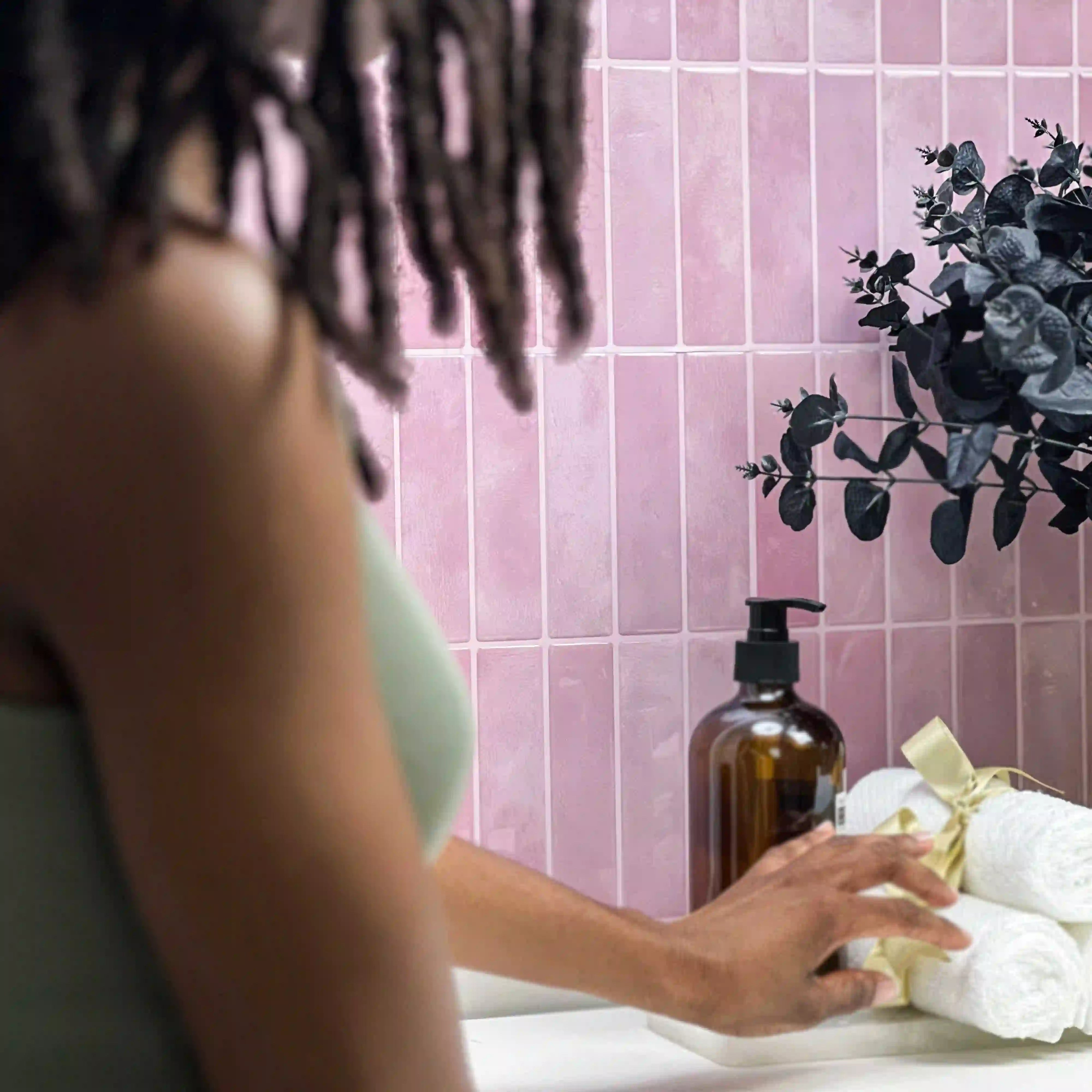
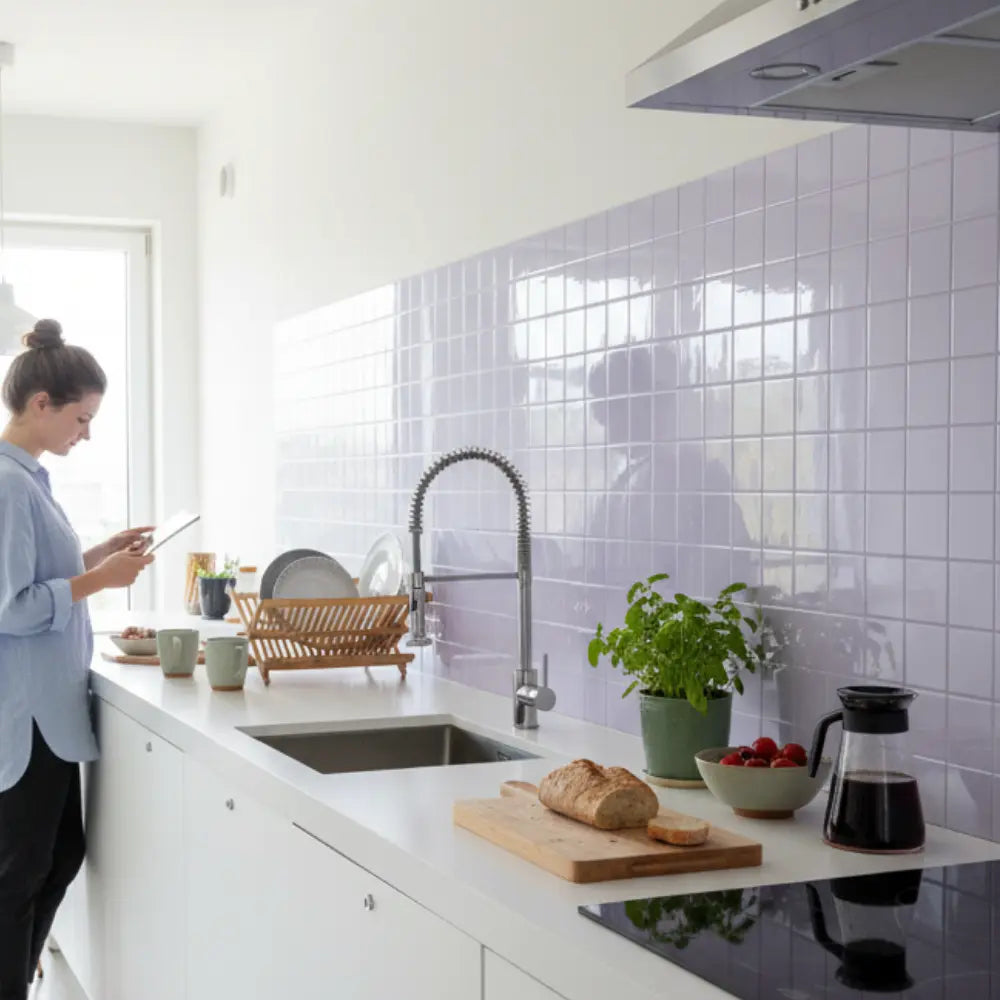
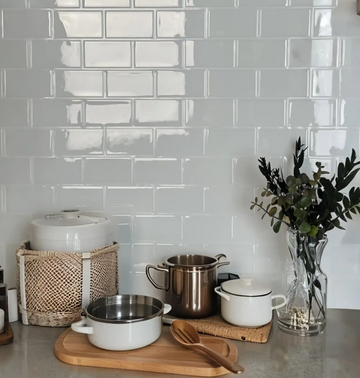
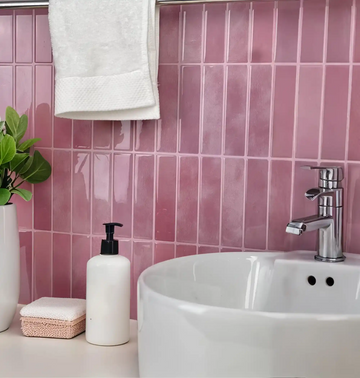
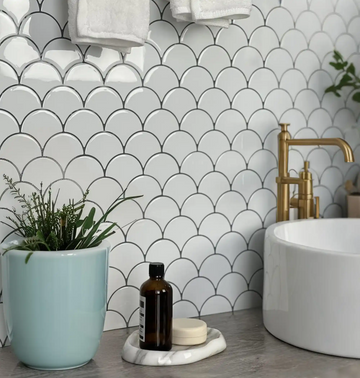
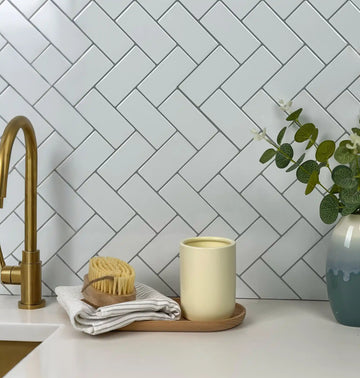
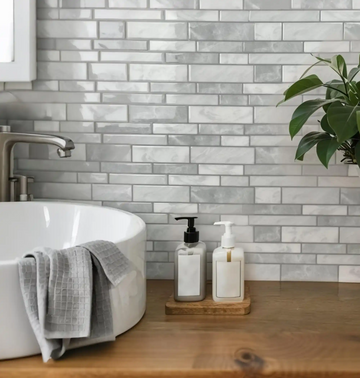
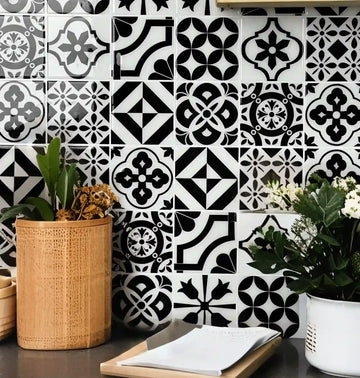
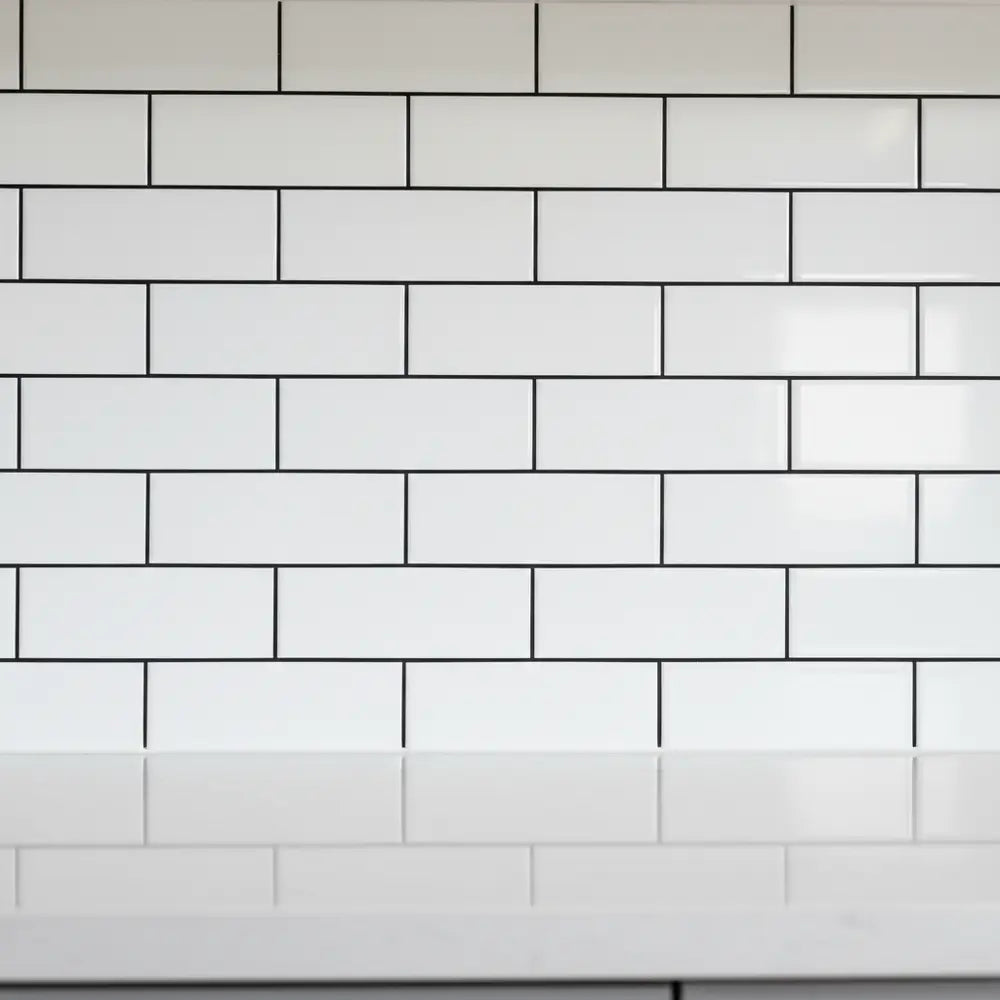
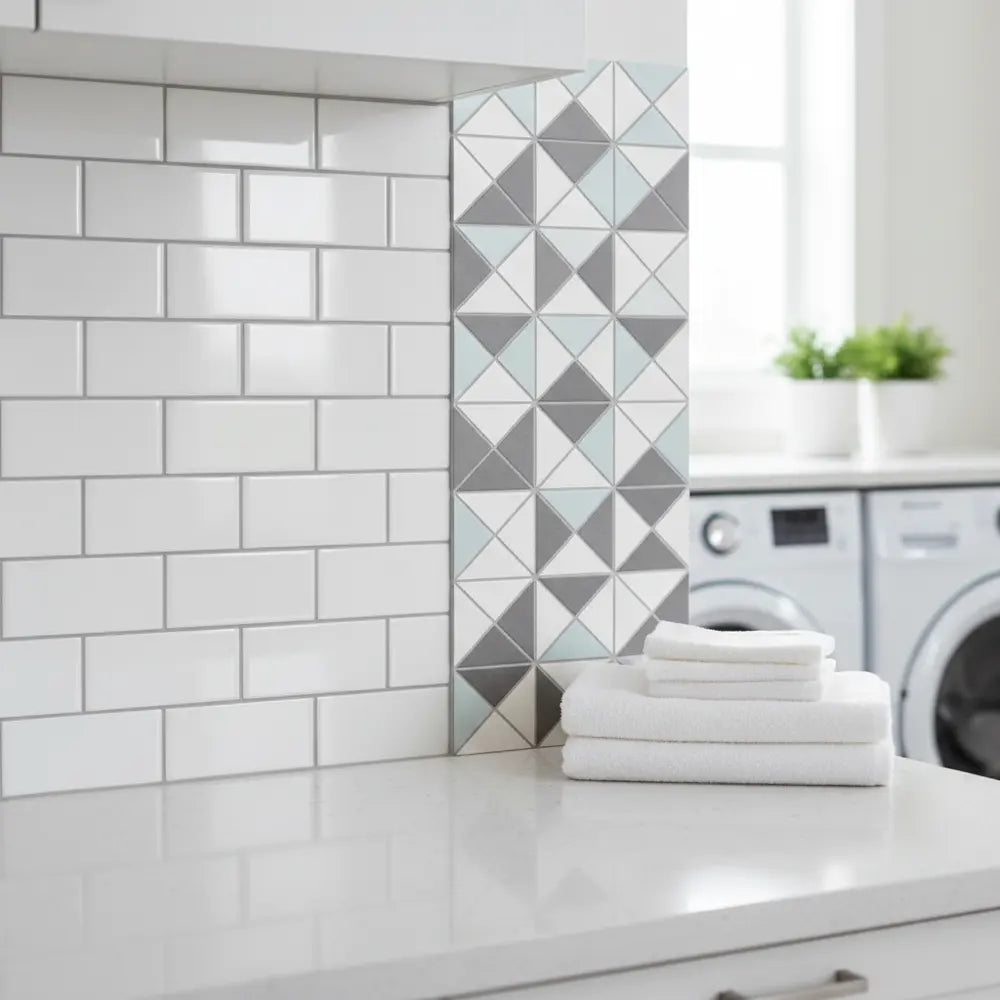
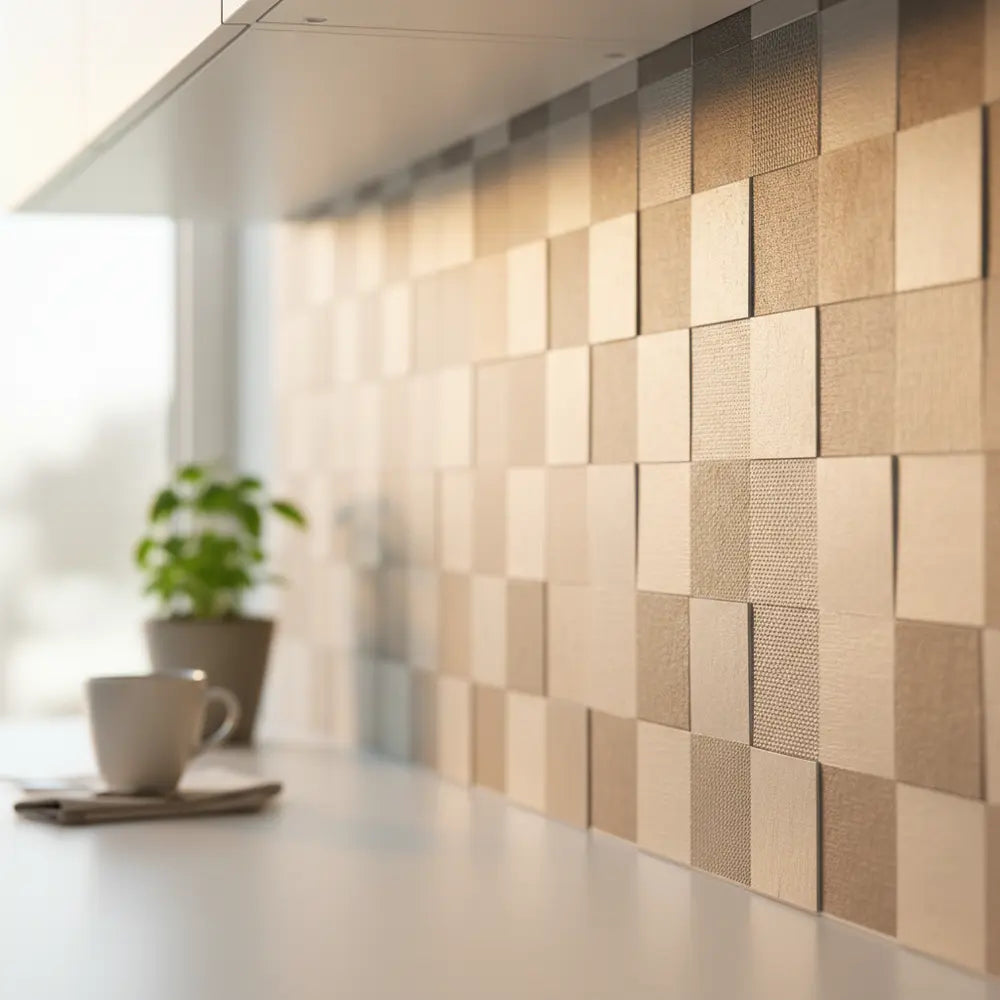
Leave a comment
This site is protected by hCaptcha and the hCaptcha Privacy Policy and Terms of Service apply.